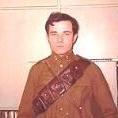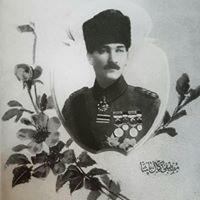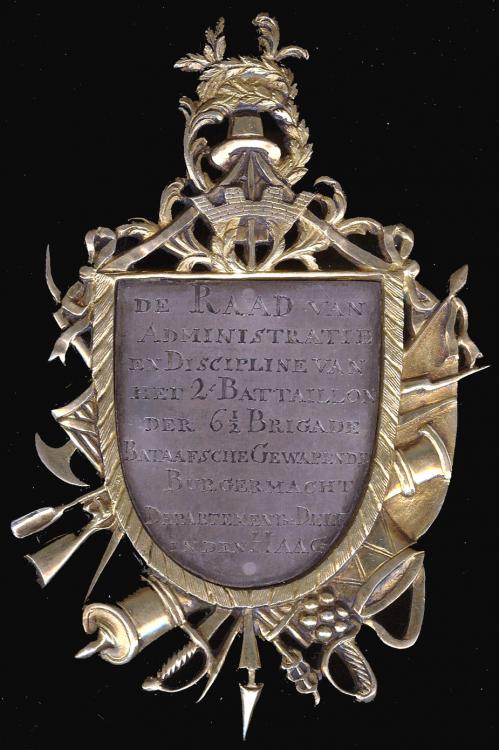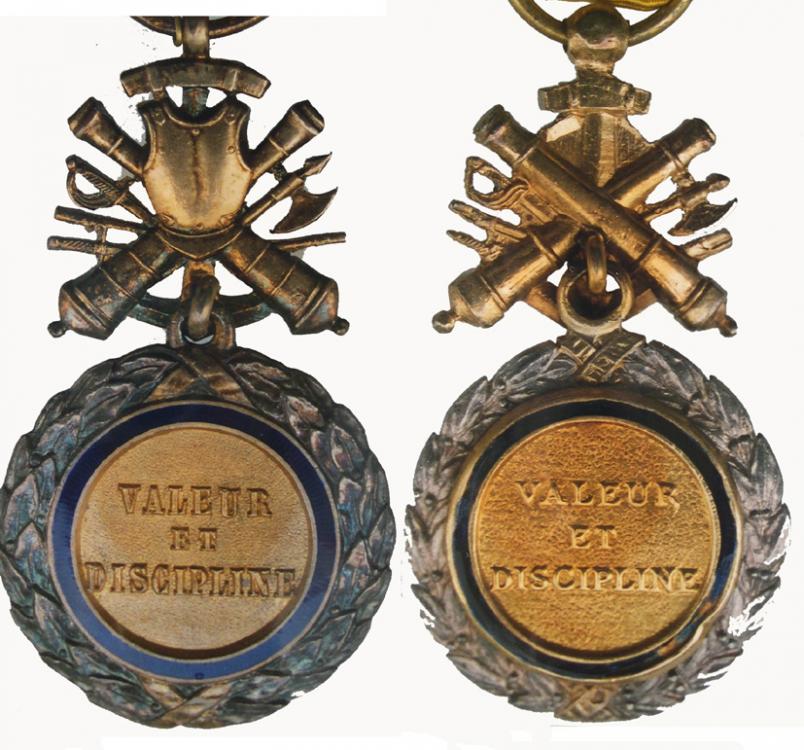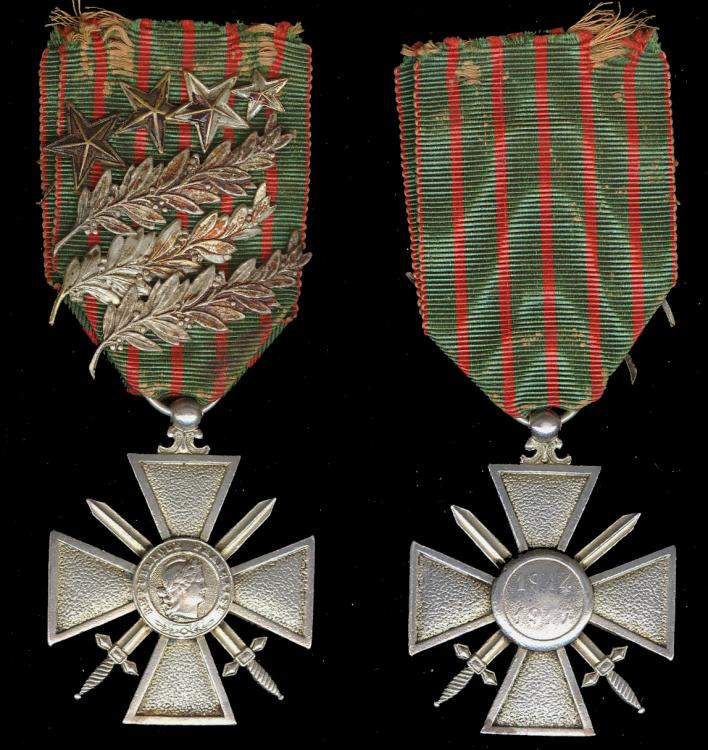-
Posts
782 -
Joined
-
Last visited
-
Days Won
2
Veteran last won the day on October 3 2009
Veteran had the most liked content!
About Veteran

Profile Information
-
Gender
Male
-
Location
Pa
Recent Profile Visitors
4,186 profile views
Veteran's Achievements
-
This is a VERY strange medal indeed ! I have collected French lifesaving material for over half a century and I cannot recall EVER having seen an UN-NAMED life saving medal such as this one. I am sure the reference you mention is correct. A first class silver lifesaving medal of this type was only awarded to a person who previously had received a second class silver medal or would have given absolytely outstanding services at his/her utmost risks. Congratulations ! Veteran
-

The Value of a Collection
Veteran commented on Brian Wolfe's blog entry in News From the Home Office.
Hello Brian, Your collection is part of your estate. The question is therefore : how do you handle your belongings ? The value of your collection is simple : it's worth what it can be sold for. How can you tell ? Offer it for sale, to a dealer, at auction, on eBay, whatever. But you don't want to sell it away. How could you tell what you can get for it ? You can have it valued by a competent auctionneer and pay him (her) a fee for the effort. You don't want to get into that sort of expense ? Have a complete inventory of your collection and keep posted on the prices you see offered in the trade, obtained in successful auctions (including cost to the buyer), or such places as eBay. Add up the prices you found. AND TAKE 50%. You might make more, but you will not make much less. I personnally would be happy to hear of an other approach. Veteran -
Hello turtle, This group is typical of post WW1 period. The only way to get this man's records is to find the "departement" (i.e. county) where he was born and probably draughted. The local archives would then be the place to research. A difficult task genealogists overcome when they are lucky. Sorry I cannot be more constructive. Veteran
-
It is a nice period piece, locally made by a Tunisian silversmith (hallmark for silver in the back); the center pieces were sometimes clumsily inserted. Or it might have been removed and replaced. Anybodie's gess, I would say. This order was widely awarded both to Tunisian nationals and to French administrators and military personnel even at rank level. The numbers of Beys (local rulers under French protectorate) and variety of manufacturers (both Tunisian and French). I have a feeling the series is gainiing interest with a larger number of collectors. It is well worth their attention, the various types still being very affordable.
-
Hello all A long time has elapsed since this post was initiated. I recently found a book which relates the awarding of the Lloyd's Medal to Dr. Kovache. Here it is should anyone be interested : Jim GAWLER. "LLOYD's MEDALS 1836-1989. Awards for courage and exceptionnal services". Hart Publishing Toronto 1989. It seems that this Silver Medal for Saving Life at Sea was presented in 1974 at Lloyd's. It was the last to bear this title, further awards being Lloyd's Medals for saving life. A total of 275 silver Life saving medals were issued between 1836 and 1989 over a period of 153 years, making it a truly scarce award. The reason why a British award should have been made to a Frenchman serving on a French ship for saving the lives of Greek sailors remains a mystery. Could it be because the tanker and its cargo could be saved ? Or was it because the action was in South African waters ? Suggestions would be most welcome. Veteran
-

NETHERLANDS; Late 18th Century badge.
Veteran replied to Veteran's topic in Northern European & Baltic States
Dear Guy Thank you for your prompt reply and translation of the inscription on the badge. This brings up a few questions : 1. Is this a badge of office or rank ? 2. Does it belong to one of the regular battalions of the Batavian Army or to a town-guard ? 3. Where could I possibly find further information about this specific badge and/or documentation on the specific unit it belonged to ? I believe it was meant to be worn on some kind of leather strap. Thank you again for your kind help. Veteran -
Hello everyone, This large badge, possibly silver and gilt silver, is a mystery to me. I rather suspect it has Something to do with a local militia town guard. Thank you for your help.
-
Hello Igor This is a very nice medaille militaire. To make it short, when the Medaille militaire was established by Napoleon III, the ribbon was suspended to an imperial eagle. After the fall of Napoleon III, the eagle was replaced a trophy of arms still which was sculptured on both sides and sodered to the medal itself. This proved to break easily and the trophy was attached to the medal by ring. The first of these loose trophies were sculptured on both sides, either with the two canons apparent or with the back part of a cuirasse covering them. Later, the run of the mill Medaille militaire were made with plain reverses Nevertheless some of the best manufacturers continued to offer medals of the obverse/reverse sculptured type and gold "bombé" centers. Those were the so called Medailles des généraux. I don't know if they are still available. Hope this clarifies the matter. Veteran
-
Hello Adrian, There is, unfortunately, no official list of awards to foreigners (non-French nationals). The style of the breast star indicates that the award was an early one (1964-1980). Your best bet would be to write to the French Military attache in Lisbon. He might have the necessary archives available. The alternative would be to write to the French Foreign Office who certainly have the archives, but no obligation to answer.... I sincerely hope this information will help you. It would be nice of you to report here the result of your possible inquieries. Veteran
-
Hi fellows, This "Major' has indeed seen foreign service (known as OPEX for OPerations EXterieures in French military jargon) !. It should possibly be mentionned that the rank of "Major" was relatively recently introduced to be given to very senior Non Commissionned Officers for whom it is the highest available. The true aristocracy in the Legion. The men in the back of the picture are Foreign Legion vétérans. They wear the traditionnal blue blazer, with white shirt, grey slacks green tie and green beret. Full size awards are always worn, never the reduced size.. All the best Veteran
-
Hello Igor, Your silver croix de guerre is a very nice one. The small "hole" on the obverse of the short section between the upper arm of the cross and the ball for the ring is the "boar-head" French hallmark for silver. You realise that it is not any special class or level of the croix de guerre, just a private refinement. Such crosses were available from a number of private firms who offered for sale badges not only in the normal bronze material, but also (at a higher cost) in silver or silver gilt. Not a special award of any kind. On the other hand, the palm in silver was meant to replace five bronze palms. I am not sure it was perfectly official, but it certainly was understood as such. French Air Force pilots would receive a large number of mentions in dispatches ("citation") each one with a new device on the ribbon of the pilot's cross. The use of silver palms for five bronze palms provided better looking décorations. A very nice cross which looks the period, very similar to this other one shown at the top of this message. Silver palms exist here too... and I cannot tell wether they are meant to replace five bronze palms each or if they are an "improved" appearance for bronze palms. It could have belonged to one of the "fly-boys" who would not generally have been challenged for such an initiative. Congratulations for this fine croix de guerre. They are quite scarce. Regards Veteran
-
Hi Chris is right. The Foreign Legion never used skulls, it just is not their tradition. I don'r know what is this lapel badge for sure. But I could venture a theory; The colours are those of the Medaille militaire which is the highest reward for bravery in the field for NCOs & other ranks. It also is the long and distinguished services award for the same personnel. The same duallity exists with the Legion of honor for officers. After WW1, a number of French officers who had received the order for gallantry felt they wanted to have something to tell this ; la "Société des membres de la Legion d'honneur decores au peril de leur vie" was established for this. Their lappel badge was a Legion of honor star enameled white with in the center a skull instead of the profile of the French Republic. That badge makes me think that NCOs who received their Medaille militaire for bravery might have wanted to do the same. I cannot prove this. All the best Veteran
-
Yes it is. The eagle head hallmark is used in France for 18 carat gold since 1847.
-
Thanks Paul, it's an interesting piece of news. Will look out for more if any exist, Best regards Veterans



